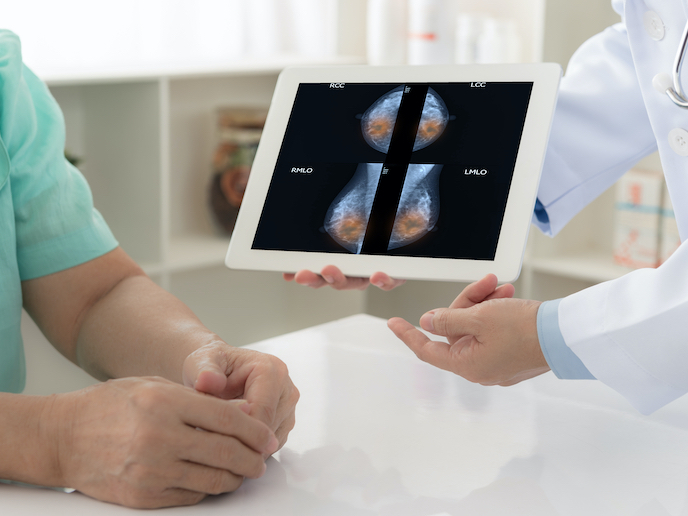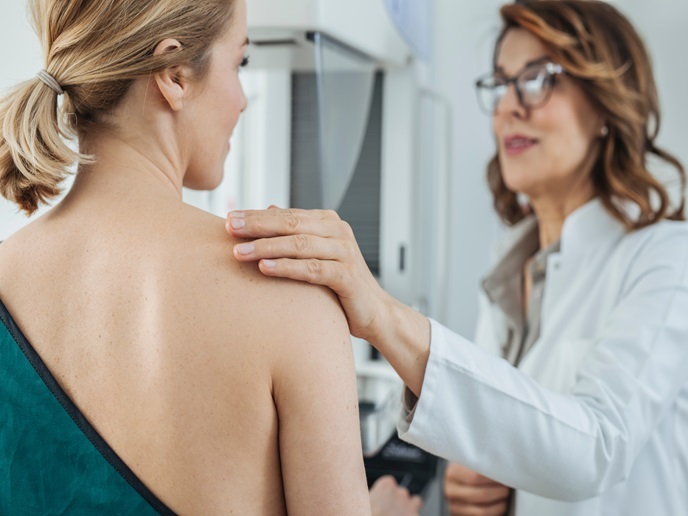The handheld device for rapid breast cancer diagnosis
Mammography(opens in new window), the ‘gold standard’ for breast cancer screening, is the only test to reduce deaths. However, it is less sensitive for denser breasts which are also more at risk. It is also typically only available to women over 40. Other diagnostic methods such as magnetic resonance imaging (MRI), biopsy and scintigraphy(opens in new window), are cumbersome and reliant on laboratory analysis, so not suitable for routine screening. Added to this, the scarcity of medical resources and specialists in low- and middle-income countries makes these options unviable. The Marie Skłodowska-Curie Actions(opens in new window) supported SHINE project has developed a proof of concept for a handheld electrochemical microfluidic paper-based device, to rapidly detect breast cancer from a blood droplet. “Liquid biopsy was listed by the World Economic Forum(opens in new window) as a top 10 emerging technology in 2017. To realise this potential, we intend our point-of-care device, SHINE, to be available to non-specialists, comparable in simplicity to the diabetes glucose sensor. It means that women will be able to seek further medical investigation earlier,” says project coordinator Arben Merkoçi from the Catalan Institute of Nanoscience and Nanotechnology(opens in new window), the project host.
The hope for liquid biopsies
Detecting DNA and RNA mutations from blood samples, known as liquid biopsy, opens up possibilities for new diagnostics. Benefiting from molecular biology, nanomaterials, DNA nanotechnology and printed electronics, SHINE developed an electrochemical diagnostic platform. To fabricate a prototype, wax templates were printed onto filter paper using a wax printer. A three-electrode system(opens in new window) was then screen-printed using Ag/AgCl ink for the reference electrode and graphite ink for the working and counter electrodes. For the electrodes to detect DNA/RNA chemicals at low levels, gold nanoparticles were drop cast onto the working areas of the electrodes. The DNA probes, which detect the mutated sequence, were fixed to paper-based strips. The platform was tested using blood containing a single DNA strand with the H1047R mutation(opens in new window) associated with breast cancer, evaluating two approaches: signal OFF and signal ON. With signal OFF, the probe is marked with electrochemicals called redox mediators(opens in new window). When the mutant sequence is recognised, the electrochemical signal decreases. With the signal ON approach, a redox mediator is added only after the mutation is recognised by the probe, whereupon the electrode adsorbs more redox mediator and the signal increases. “The sensitivity of the platform to the target chemicals was calculated to have a detection limit of six nanomolars(opens in new window), in line with approaches such as ELISA(opens in new window), but not as sensitive as time-consuming PCR procedures,” explains Stefano Cinti, the principal investigator. The results have been published in the Analytical Chemistry journal(opens in new window).
For point-of-care personalised medicine
According to the World Health Organization(opens in new window), 2.3 million women were diagnosed with breast cancer in 2020, with 685 000 deaths. With 7.8 million women diagnosed with breast cancer within the previous 5 years still alive at the end of 2020, it is the world’s most prevalent cancer. Turning the tide means detecting it quickly and early enough for it to be curable. “SHINE brings us closer to the day when everybody, everywhere, could detect malignancies at home, of particular benefit to people in remote areas. This technology could offer new opportunities for personalised care,” adds Merkoçi. The next step for the project is to secure investment to fund clinical trials.







